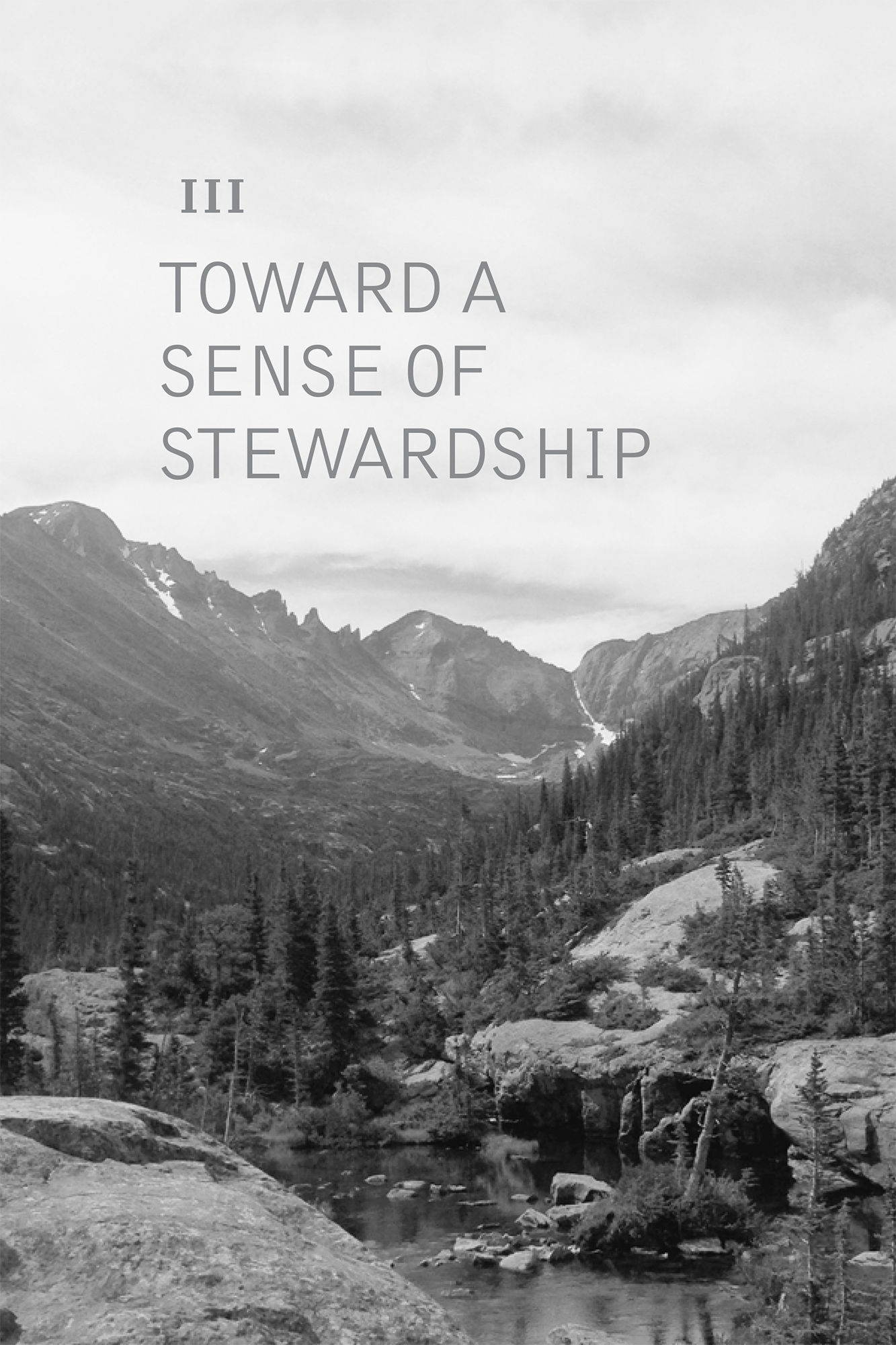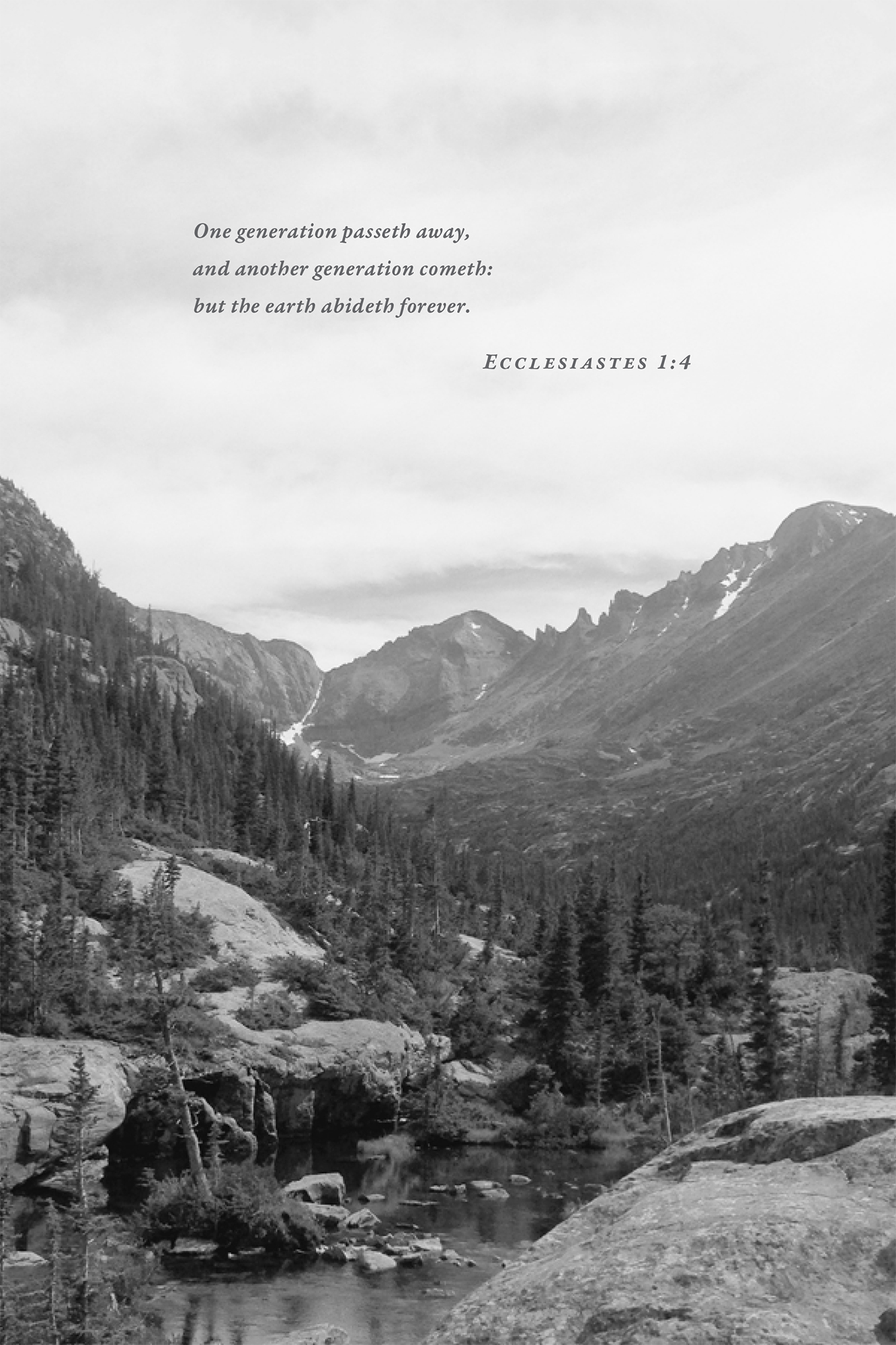

“TO EVERY THING there is a season, and a time to every purpose under the heaven.” In the narrow, limitless world of the hiker, we pass through stages. Have we not all known the mountains as different places at one time or another? Are we going to the same hills now that we saw when we made our first climb? Do we not perceive a different backcountry at age 40 from that we saw at age 20 and that we will see at age 60? Do we climb this weekend for the same reasons we climbed last weekend?
Sometimes we wish we could reclaim and hold forever that bloom of excitement when we saw Tuckerman Ravine for the first time; the first time we tied on to a rope and followed up a cliff; the mix of fear and joy when first we stood on a steep snow slope and watched the kicked-off clumps cascade endlessly down into the void beneath our feet. Remember the strange new exhilaration as darkness fell on those first nights camped out? The first loon heard? The first experience of a wind-wracked whiteout above treeline? That first long bushwhack, separated from trail and any other link to humanity’s tools of security, committed to the compass and the map and the patience to keep moving through those dense thickets?
Yes, there was an edge to those initial exposures that we can never recapture for ourselves, though we can recognize that blend of ecstasy and apprehension in others when we’re with them on their maiden flights into the mountain world.
Does this mean it’s all metaphorically downhill after the first ascent? Not at all. By no means! Those to whom the mountains hold most meaning keep coming back to find satisfactions of a different order. When we’re lucky, those satisfactions grow rather than diminish. That’s why we return to the mountains, why we come back forever, why we lift up our eyes unto the hills, from whence cometh our help.
Excitement and wonder remain. But to these surface delights are added many other satisfactions. Perhaps they may differ from one person to another, or from one trip to another for the same person.
Consider the variety of compelling attractions that draw people to the backcountry. Some grow fascinated with detailed knowledge of the flora and fauna; others wax zealous in pursuit of as many different summits as they can climb; others like to return over and over to the same familiar crags or glens; still others gain great joy from increasing speed afoot on mountain trails, or increasing difficulty on rock or ice faces. For some, those rare days of dazzling sun and clear, windless, deep-blue sky are priceless times to be high; others emphatically prefer to be blown about in a sightless whirlwind of winter storm, tested to the limit.
How many people pass from the stage of first seeing the big-name peaks of their region, to a second stage of pursuing the list of local 4,000-footers or 14,000-footers or whatever, to a third stage of returning over and over to some special favorite peak or camping spot? Or maybe to a stage of introducing others to the world we’ve come to love, or leading beginners and teaching the arts of the backcountry?
As with each of us in our personal hiking or climbing lives, so with the hiking community as a whole: In every region we can trace historical phases in the hiking life of the region. In our New England, we can look back through history at the excitement of the first people to explore the mountain heights—or, more accurately, the first whose ascents were recorded:
 The illiterate pair who walked together to the top of the region’s highest peak, Mount Washington, in 1642, one of them a Native American whose name is lost to history, the other a wide-eyed colonist named Darby Field, from one of those earliest coastal settlements in the region of what is now Portsmouth, New Hampshire.
The illiterate pair who walked together to the top of the region’s highest peak, Mount Washington, in 1642, one of them a Native American whose name is lost to history, the other a wide-eyed colonist named Darby Field, from one of those earliest coastal settlements in the region of what is now Portsmouth, New Hampshire.
 A much later generation of curious botanists, in the early years of the nineteenth century, learned gentlemen who clambered all over the more rugged and hitherto inaccessible corners of Mount Washington and its neighboring peaks, primarily to discover and study and record the diversity of alpine vegetation in that strange new world of mountain tundra.
A much later generation of curious botanists, in the early years of the nineteenth century, learned gentlemen who clambered all over the more rugged and hitherto inaccessible corners of Mount Washington and its neighboring peaks, primarily to discover and study and record the diversity of alpine vegetation in that strange new world of mountain tundra.
 Early land surveyors poking through the endless maze of rivers and forests until at length they emerged on the high open plateau of Katahdin and walked to its highest point to gaze with sudden rapture down the eastern precipice to tiny Chimney Pond.
Early land surveyors poking through the endless maze of rivers and forests until at length they emerged on the high open plateau of Katahdin and walked to its highest point to gaze with sudden rapture down the eastern precipice to tiny Chimney Pond.
 George Witherle and his patient wife, who hired two woods guides (a father and son) and as a party of four tramped yet farther north to explore and climb dozens of smaller mountains in the northernmost ranges of Maine.
George Witherle and his patient wife, who hired two woods guides (a father and son) and as a party of four tramped yet farther north to explore and climb dozens of smaller mountains in the northernmost ranges of Maine.
 The Swiss scientist Arnold Guyot, who pushed to the tops of many peaks hitherto unknown to the early settlers who had seen them only from afar.
The Swiss scientist Arnold Guyot, who pushed to the tops of many peaks hitherto unknown to the early settlers who had seen them only from afar.
Following on the footsteps of the explorers came those who sought to make the glories of the heights more accessible to others. New England entered a period of trail building, which even included an abundance of bridle paths and carriage roads up the gentler slopes. Mountaintop buildings with names like TipTop House or Peak House or Summit House were erected. At a slightly later stage came a spectacular flurry of trail building to open up every mountain and, on the more famous peaks, every ridge and valley approach.
Then came a backlash of concern for preserving the mountain world from overexploitation. People realized we might destroy the wild quality that had attracted us to the hills in the first place. The first phase of this concern was directed against overconsumption of mountain resources, such as the timber of the surrounding forests. So national forests, state parks, and private reserves were set up to control indiscriminate logging and other economic uses of the land. The second phase of this concern was to restrain our own friends from overdeveloping mountain recreation: so some ridges were left trailless, some trails allowed to revert to nature, and summit houses either torn down or burned and not replaced.
A few years ago after the first edition of this book, on the heels of that unprecedented backpacking boom of the 1960s and 1970s, our New England entered still another phase of its centuries-old love affair with the mountain world. In this, our region was joining a new movement that spread nationwide. This was the age of awakening environmental concerns, of a new backwoods ethic.
These were the years when our generation began by picking up every scrap of litter in the backcountry, cleaning up the can pits and trash piles behind every backcountry shelter, keeping the soap and wastes out of water supplies. Then we moved on to combating trail erosion, building drainage ditches and water bars, placing heavy stepping-stones, erecting scree barriers to direct hiking traffic where it would do the least harm to the fragile mountain environment. This was the age when most of us stopped building campfires and began carrying camping stoves. This is the age we described earlier in this book.
All of which we review in order to ask the vital question: What’s next? Where do we go from here? What new phase lies in store for backcountry recreationists?
Our crystal ball of the late 1970s was no less cloudy than anyone else’s. We looked for the answers in what we thought we saw beginning to happen around us. What we saw then is still clear and present, and very encouraging. It is a growing sense of stewardship, a spreading feeling of commitment to a role of stewards for the mountains.
Both among individuals we know and broadly throughout the hiking community of our region, we see people moving on from just hiking, or even just being responsible and careful environmentally clean hikers and climbers, to a new phase. That phase is one of personal involvement in protecting and enhancing the mountain environment. At the core of this new consciousness is a concern about what kind of backcountry we are leaving to the next generation. And what gives vitality to this new concern is that it is linked to a resolve for practical action.
This is the new sense of stewardship that we describe in the next few chapters.
It is our observation and prediction, and also our fervent hope, that this generation of backcountry recreationists is entering a new phase of protective caring for the land. Sure, there will always be people coming into the hills for the first time, and others taking on the heady pursuit of the 4,000-footers or 14,000-footers or other personal goals. We see nothing wrong with that. But more and more we see people turning with pleasure to that next phase—of giving something back to the hills which give us so much.
Join us in these next few pages—and then join all of us out on the trails and up on the heights. We are delighted with the spirit we find abroad in the backcountry today, and with the people who are putting their backs where their hearts are (hmmm, that sounds awkward) to try to preserve and strengthen the mountain heritage that we have been blessed with and that we wish to pass along to the next generation. It’s a brave new world that has such people in it. Come on along.